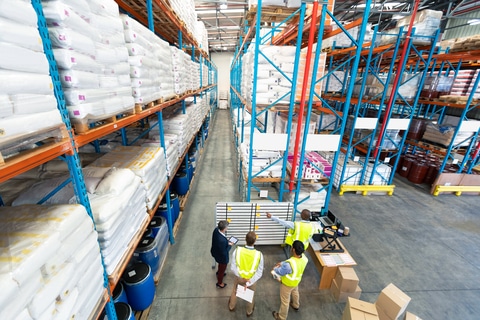Scaling Your Workforce, Decoupling Constraints Can Slice Manufacturing, Distribution Costs
I’ve written many times about how VUCA (volatility, uncertainty, complexity and ambiguity) characterize today’s business environment. Disruption truly is the new normal, and insightful leaders understand that competitive advantage requires agility and adaptability. Leaders must integrate flexibility into their operations. Adaptable organizations can surf past disruptions effectively. Labor on demand is a key strategic solution for organizations that make, assemble or deliver products. In many cases, the benefits of on-demand employees let you re-engineer your processes. Your enterprise could double asset utilization and dramatically reduce manufacturing and distribution costs.Understanding VUCA and the Need for Agility
VUCA often triggers abrupt shifts and unforeseen business obstacles. Executives who embrace adaptable and nimble strategies can more effectively prepare their companies for lucrative expansion. Flexible assets, like on-demand labor, offer the adaptability to adjust your workforce according to immediate requirements. Scalability ensures operational efficiency and cost-effectiveness.Workers on Demand – Why W2s Work; Independent Contractors Don’t
Task4Pros offers workers on demand for essential industrial roles. They have a compelling value proposition. Unlike many “temp” agencies, Task4Pros offers you W2 employees, not independent contractors. Using independent contractors in your warehouses or factories creates substantial legal risks. Your enterprise could face co-employment or worker misclassification lawsuits. Successfully defending such lawsuits could cost hundreds of thousands of dollars. And that’s if you win. W2 employees from a company like Task4Pros substantially mitigate this risk. Task4Pros supports roles in warehousing, manufacturing, assembly and driver delivery, making it a versatile tool for businesses seeking operational flexibility.How Adaptable Labor Solves the TV Dinner Equation
Putting out the call for workers on demand offers manufacturing and assembly flexibility. Let’s examine producing TV dinners. Popular turkey dinners may require high volumes of production. Those volumes give engineers the opportunity to automate much of the process. So, you can “manufacture” turkey dinners with only nine people. The manufacturer produces these high-demand products for eight hours each shift. But a fiesta burrito bowl might require 54 people on each manufacturing line. Two hours of production a day might fulfill demand. It would be wonderful if six production lines with nine workers per line produced all the TV turkey dinners needed. If your equation is that easy, just hire 54 full-time workers. You have no need to hire workers on demand. But in the real world, your company needs to make those lower-volume fiesta burrito bowl dinners. Variability and line changeovers mean you might need 200 workers one day, 40 the next. A ready-made, on-demand workforce can help you scale efficiently.Don’t Hold My Beer – Optimize Its Delivery with a Flexible Worker
In another example, Task4Pros has revolutionized beer delivery in Brazil through its subsidiary, MeuChapa. Task4Pros delivers 92% of the beer in Brazil. Restructuring the roles of drivers and assistants has optimized both labor costs and truck utilization. Before Task4Pros, the driver and an assistant would drive to the first location. The assistant unloaded the beer, stocked the shelves, adjusted signage, took a photo of the display and got back into the truck. That process took from 45 minutes to an hour. Why doesn’t the driver help unload and stock? Well, in many places it’s forbidden by law, not allowed by the driver’s contract or against union rules. With Task4Pros, the assistant arrives at the first stop about 15 minutes before the driver. The assistant, a Task4Pros employee, has the pallets lined up on the dock. The assistant unloads the truck via pallet and closes the door. In five minutes, the truck is headed to the second stop. The Task4Pros assistant stocks the beer and gets paid for two hours of work. Assistants also benefit from this flexible work arrangement. They can accept another gig, head to a different job, go home, whatever.Doubling Asset Utilization Generates Huge Savings
Meanwhile, the driver arrives at the next stop in 15 minutes. (Depending upon traffic, of course!) Another Task4Pros unloader is there. That process repeats itself all day. Previously, the beer company paid the assistant for an hour and half of labor at each stop. But the unloader is the least expensive player in this story. The truck driver, the most expensive part of the labor equation, spent hours each day waiting. The new process allows truck drivers to average 17 stops a day, not 8. Truck utilization more than doubles – and the truck is the most expensive part of the process. Instead of requiring 100 trucks and 100 drivers, the beer company only needs 50 trucks and 50 drivers. Those are substantial savings.When to Implement On-Demand Labor
If you consistently need 40-42 people every day in your manufacturing or warehouse operations, don’t bother with labor on demand. But rarely have I seen such a “stable” labor situation. And the disruptions of the last few years have almost made such “normality” extinct. Most labor requirements vary daily, weekly, monthly or seasonally. Insightful leaders should figure out the patterns of their busiest manufacturing and shipping days. Learn and go from there. Some sectors move more product the first Friday of the month, or possibly the last Friday of the month. Many need more workers on Mondays and Fridays, fewer on Tuesdays, Wednesdays and Thursdays. They’re either replenishing stores after weekend sales or stocking up for weekend shopping. Holiday and summer sales also affect demand. The greater your fluctuation in daily labor requirements, the more benefit you get from accessing workers on demand.Uncoupling Constraints and Adding Labor Adaptability
Whatever your situation, discover which constraint is least expensive. Use labor on demand to uncouple that constraint from the process. Then optimize the most expensive part. In the beer delivery example above, beer companies reduced the capital they need to purchase trucks by 50%. They reduced driver labor by 50%. All by decoupling the driver’s assistant from the process. Whatever your situation, you want to find the constraint that is the least expensive part of your equation. Uncouple that constraint from the process. Then use labor on demand to optimize the most expensive part. Want to discover those constraints in your process? I would love to hear your story. Reach out and let’s talk. Your enterprise should have the labor on hand that you need for the day. No more, no less. Labor on demand gives your enterprise adaptability, whether you need manufacturing, assembly, driver delivery, warehouse labor or some combination. Related ReadingJim Tompkins, Chairman of Tompkins Ventures, is an international authority on designing and implementing end-to-end supply chains. Over five decades, he has designed countless industrial facilities and supply chain solutions, enhancing the growth of numerous companies. He previously built Tompkins International from a backyard startup into an international consulting and implementation firm. Jim earned his B.S., M.S. and Ph.D. in Industrial Engineering from Purdue University.






